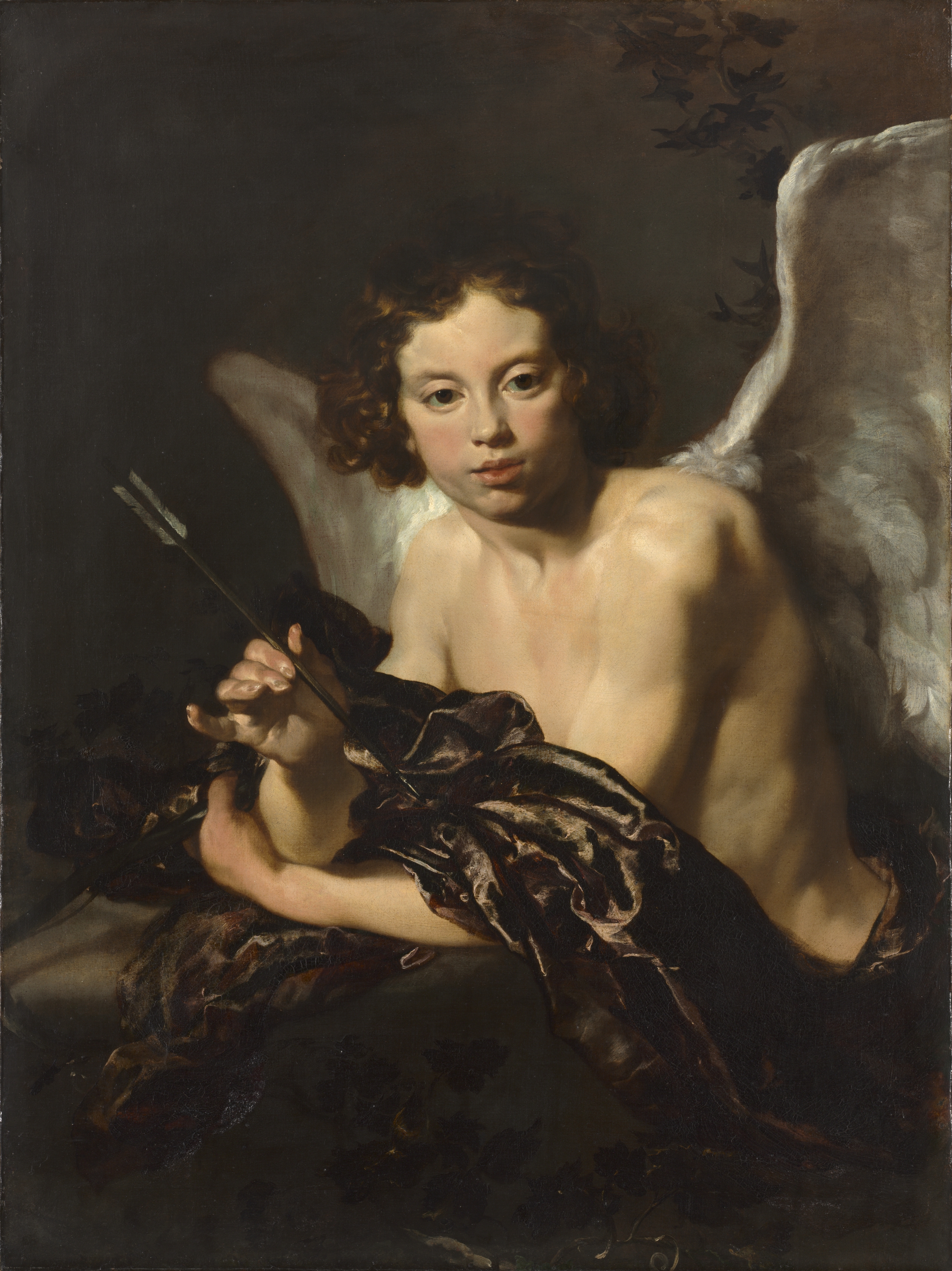The Cleveland Museum of Art
Collection Online as of April 24, 2024

Cupid (Amor)
c. 1630
(German, c. 1597–1631)
Framed: 108 x 86 x 6.5 cm (42 1/2 x 33 7/8 x 2 9/16 in.); Unframed: 87.7 x 65.7 cm (34 1/2 x 25 7/8 in.)
Leonard C. Hanna, Jr. Fund 1971.100
Location: not on view
Did You Know?
Liss skillfully combined Dutch, Flemish, and Italian styles to create his own distinct manner.Description
Johann Liss studied in Holland and Antwerp, and later (about 1620) traveled to Rome and Venice. His painting of Cupid—also known as Amor, the god of love—displays rich colors and fluid brushwork that were influenced by past Venetian masters (Titian, Tintoretto, or Veronese), while the deep contrasts of light and shadow reveal a stylistic debt to Caravaggio. The directness of Cupid’s gaze and the concentrated energy of his pose create a strong connection with the viewer.- 1971-The Cleveland Museum of Art, Cleveland, OhioUntil 1971(Heim Gallery, London, sold to the Cleveland Museum of Art)Probably 1959-?Probably Enrica Basevi, Genoa11936-1959Alessandro Basevi [1877-1959], Genoa, probably by descent to his daughter, Enrica Basevi11936(Galleria Pesaro, Milan, probably sold through Mauro Pellicioli to Alessandro Basevi)1Until 1936Agosti and Mendoza collection, probably consigned to the Galleria Pesaro1Provenance Footnotes1 1 Alessandro’s daughter, Enrica Basevi, wrote to CMA curator Anne Tzeutschler Lurie in 1972 that after the death of her father, his collection of paintings had been dispersed. It is unclear at this point whether the Liss was sold privately or at auction. It does appear that Enrica had the painting in her possession at least briefly after her father’s death, as a certificate of authenticity for the painting was later found among her belongings.2 1In March 1944, Basevi’s collection of silver, gold, and other precious objects was seized by the SS (J.B. Ward Perkins, letter to Chief, MFAA Branch, October 13, 1945, Subject: Property of Alessandro Basevi, Genova. Italian Miscellaneous Correspondence. Records Relating to Claims. Record Group 260. National Archives Identifier 1561450. M1926, Roll 111, pages 388-418. Fold3.com, http://www.fold3.com/image/274406062, retrieved May 21, 2014). It seems that Basevi retained possession of the Liss painting throughout the war, as no paintings appear on the list of items confiscated, and his grandson, Andrea Basevi, made no mention of its having been confiscated. The painting was certainly with Basevi in 1947, when he is listed as the owner in an exhibition at the Palazzo Reale in Genoa.3 1 Andrea Basevi, Alessandro Basevi’s grandson, recalled that his grandfather purchased the Liss in November 1936 from the Galleria Pesaro in Milan through a “Dr. Pellicioli” – probably Mauro Pellicioli, a painter and restorer – who may have acted as an agent or otherwise facilitated the sale. In January of 1937, the Galleria Pesaro held a sale of the Agosti and Mendoza collection. The Liss painting does not appear in the sale catalogue, and thus Mauro Pellicioli, working with the Galleria Pesaro, probably sold it directly to Basevi. Pellicioli is known to have arranged a private treaty sale of a painting he was restoring in his studio on at least one occasion (Giovanni Battista Moroni's Portrait of a Gentleman of Distinction is currently with the heirs of the private collector with whom Pellicioli arranged a sale), and it is possible the Liss was sold through a similar arrangement with Basevi.4 1Many of the works in the Agosti and Mendoza collection were formerly part of the Achillito Chiesa collection, which was sold in 1925-27 by the American Art Association in New York. The Liss painting is not listed in that sale catalogue, although that does not preclude the possibility Chiesa owned it at some point.
- Klessmann, Rüdiger. Johann Liss: A Monograph and Catalogue Raisonné. Doornspijk, the Netherlands: Davaco, 1999.Morassi, Antonio. Mostra della pittura del seicento e settecento in Liguria. Milano: Alfieri, 1947.The Cleveland Museum of Art. Handbook of the Cleveland Museum of Art/1978. Cleveland, OH: The Cleveland Museum of Art, 1978. c Reproduced: p. 134 archive.orgThe Cleveland Museum of Art. The Cleveland Museum of Art Catalogue of Paintings, Part 3: European Paintings of the 16th, 17th, and 18th Centuries. Cleveland, OH: The Cleveland Museum of Art, 1982. Mentioned: p. 174-176; Reproduced: p. 175
- Le Caravagisme Européen. Musée des Augustins, Toulouse, France (organizer) (June 22-October 14, 2012).Musée des Augustins, Toulouse, France (6/22/2012 - 10/14/2012): "Le Caravagisme Européen", ex. cat. no. 101, p. 376-377.Caravaggio: Behold the Man. Columbus Museum of Art, Columbus, OH (organizer) (October 21, 2011-February 14, 2012).Columbus Museum of Art, OH (10/21/2011 - 2/5/2012): "Caravaggio: Behold the Man"Augsburg, Sadtische kunstsammlungen, 1975: "johann Liss," cat. no. 29, pp. 23, 70, 101-103, 104, 106, 108, color frontispiece (catalogue by Rüdiger klessmann, Ann Tzeutschler Lurie, and Louise Richards). The Cleveland Museum of Art (1975/76).CMA, January 1972: "Year in Review 1971," cat., Bull., LIX (January1972), p. 42, no. 54, repr. p. 13.Year in Review: 1971. The Cleveland Museum of Art, Cleveland, OH (organizer) (December 28, 1971-February 6, 1972).Venice, Ca'Pissaro, 1959: "La pittura del Seicento a Venezia," cat. no. 63, illus.Genoa, Palazzo Reale, 1947: "Mostra della pittura del Seicento e Settecento in Liguria," cat. no. 146, illus. (catalogue by Antonio Morassi).
- {{cite web|title=Cupid (Amor)|url=false|author=Johann Liss|year=c. 1630|access-date=24 April 2024|publisher=Cleveland Museum of Art}}
Source URL:
https://www.clevelandart.org/art/1971.100